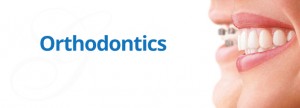Orthodontic treatment involves a series of procedures to correct the malocclusions like misalignment of a bite or incorrect spacing between teeth to a practically better and desirable position.  Indications for orthodontic treatment:
Indications for orthodontic treatment:
- Crooked teeth
- Overbite or “buck teeth” in which the upper front teeth is too far forward over the lower teeth
- Underbite or “bulldog” teeth in which either lower teeth are too far forward or the upper teeth too far back
- Crossbite is when the upper teeth do not come down slightly in front of the lower teeth when biting together normally
- Open bite is when there is space between the biting surfaces of the front and/or side teeth when the back teeth bite together
- Misplaced midline is when the centre of upper front teeth does not line up with the centre of lower front teeth
- Spacing as a result of missing teeth or teeth that do not “fill up” the mouth
- Crowding is the presence of too many teeth for the dental ridge to accommodate
How Does Orthodontic Treatment Work? Orthodontic treatment is done to move teeth, retrain muscles and affect the growth of the jaw by placing gentle pressure on the teeth and jaw. This is achieved by the use of different types of appliances that are either fixed or removable. The choice of appliance depends upon the severity of the problem. Fixed appliances include:
- Braces are used to put tension on the teeth, gradually moving them to their proper position.
- Special fixed appliances are attached to the teeth by bands to control thumb sucking or tongue thrusting.
- Fixed space maintainer is used to keep the space open until the permanent tooth erupts in case a baby loses a tooth prematurely.
Removable appliances include:
- Aligner is an alternative to traditional braces to move teeth in the same way as done by braces.
- Removable space maintainers work same as fixed space maintainers but can be removed.
- Jaw repositioning appliances or splints are worn either on the top or lower jaw to train the jaw to close in a more favourable position.
- Lip and cheek bumpers are designed to keep the lips or cheeks away from the teeth to relieve the pressure exerted by them on teeth.
- Palatal expander is a device used to widen the arch of the upper jaw.
- Removable retainer devices are used to prevent shifting of the teeth to their previous position and also to prevent thumb sucking.
- Headgear is used to slow the growth of the upper jaw.
Benefits of Orthodontic Treatment
- Straighter teeth resulting from orthodontic treatment can avoid problems such as an improper bite, difficulty speaking or chewing etc.
- Reduces the risk of tooth decay and gum disease
- Healthier mouth
- A more pleasing appearance
- Teeth are more likely to last a lifetime















